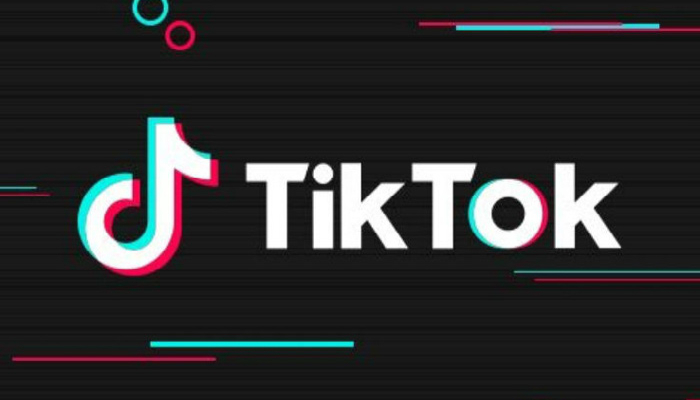
or

The chorus for an Indian short video format service as an alternative to that widely popular Chinese service TikTok, has grown on the heels of the recent Government ban on TikTok and 58 other Chinese applications. Is it that easy? Can someone just develop and publish a slick App, market it and let users run with their wild imagination and (apparent) need to make a spectacle of themselves?
Quite apart from the connected aspect of the short term and long-term prospects of an Indian service from the perspective of monetisation, the answer is an emphatic “No”.
This article focuses on how copyright law more specifically music licensing is likely to impact any future Indian short video format service.
TikTok spread like wildfire because of its reputation for cringe, funny and questionable 15 second videos posted by users. Most videos are synched with background music or dialogues from films or other sounds. While, music certainly plays a predominant role with a service like TikTok. We firstly need to understand how short video services like #TikTok work.
The magic words here, (which the music industry and songwriters/ artists love), is “Music license” colloquially referred to in the music industry as the “Synch License” & “Publishing License”. Any short video service will need two things to really get started, (a) a back-end Sound-Recording library (comprising of music or film dialogues or any other background noise etc.) or what is called “Audio Library” and (b) crazy users who are game to make a spectacle of themselves and who it seems are in abundant supply.
This back-end Audio Library is provided by the Short Video Service and not users. Because this back-end music is not generated by users (also called ‘User Generated Content or UGC), the service cannot claim the “safe harbour” available to intermediaries which is basically the “don’t-blame-me-blame-the-user-aslong- as-I-remove-the-content-when-youcomplain rule” under the Information Technology Act, 2000.
This then means that the service/ platform needs to firstly clear Sound Recording licenses (also called Master Rights Licenses) i.e. the “Synch Right” from music labels. In addition, the service needs to clear “Publishing Rights” licenses for exploitation of the lyrics and music underlying the Sound Recordings. Complicated much? Not really- so- a Synch license from a Music Label (for synchronising a pre-existing audio track from the Audio Library with a video made by a user) and, a Publishing Rights plus a Mechanical Rights license from a Music Publisher or a Copyright Society for clearing the streaming and reproduction/ storage of underlying works.
How did TikTok get here? Before it became TikTok, the service was known Musical.ly which was in turn an erstwhile US platform, absorbed by Bytedance, the owner of TikTok. TikTok emerged as we know, from China where it is known as Douyin.
The service had already scaled tremendously in China, where well, let’s just say Music licensing wasn’t at that time a structured business requirement TikTok’s foray in the rest of the world was massively disruptive given its short video format- insanely attractive to the younger generation. The service’s huge scale and valuation achieved in China helped power it elsewhere.
This scale allowed TikTok to meet its new challenge in the west i.e., Music Licenses without which, TikTok would have faced major litigation in the US & elsewhere jeopardising its short video format. Currently, as per reports in the press, TikTok has more than 8,000 licensing deals, most of them inherited from the absorption of its former competitor Musical.ly. This has not been easy. Music licensing concerns clearly escalate as the reach of the service expands because artists and music business must be compensated fairly. This became an issue and resolved in China as well with a music license deal with Tencent Music which has exclusive licensing arrangements with the major international music labels.
So, any Indian short video service would need to build a sizeable licensing war chest, navigate copyright law, negotiate music licenses in India and with growth each year (i.e., scale without revenue) consider the prospect of increasing license fees. The licensing terrain includes companies like Super Cassettes Industries a.k.a “T-Series”, the big boy of the music industry and Saregama India Limited which owns or controls rights to India’s musical history – approximately about 15-20 companies (not counting the hundreds of smaller labels) and publishing rights with India’s only copyright society Indian Performing Rights Society or IPRS representing more than 5000 Indian lyricists and music composers and publishers. This licensing scale grows exponentially when the service, as is inevitable, reaches out to other jurisdictions.
Apart from licensing music for its audio library, the service as an intermediary will also need to invest in building a robust ‘take down’ mechanism to comply with a deluge of automated take down notices sent by copyright owners in relation to allegedly infringing user uploads.


If you ask me - my money is on Facebook or Google in this game – scale, tech prowess, finesse, depth and staying power - all guaranteed.
Tags: Saikrishna & Associates
Ameet Datta is a Partner at Saikrishna & Associates. He is an IP litigator and TMT lawyer with over 22 years of experience and wide ranging expertise across IP Law, Technology law, privacy and data protection law, white collar crime cases around data breaches, and, media & entertainment law specifically in relation to licensing, content aggregation & acquisition, film & music production, distribution/ licensing, format rights, defamation and right of publicity. Ameet has extensive experience with the creative sector in terms of multiple litigations including licensing disputes before the Courts & the Copyright Board. Ameet is closely involved with Copyright laws, Technology regulations and policy matters. In 2010, Ameet appeared as an expert witness before the Indian Parliamentary Standing Committee overseeing amendments to the Copyright Act, 1957. Ameet has been highly ranked as a recommended lawyer for IP Litigation, and, telecoms, media & entertainment by Chambers & Partners (Asia Pacific), WTR1000; as a recommended lawyer for IP litigation by Legal 500, and recommended as an IP Star by MIP

Lex Witness Bureau

Lex Witness Bureau

Lex Witness Bureau

For over 10 years, since its inception in 2009 as a monthly, Lex Witness has become India’s most credible platform for the legal luminaries to opine, comment and share their views. more...
Connect Us:


The Grand Masters - A Corporate Counsel Legal Best Practices Summit Series
www.grandmasters.in | 8 Years & Counting
The Real Estate & Construction Legal Summit
www.rcls.in | 8 Years & Counting
The Information Technology Legal Summit
www.itlegalsummit.com | 8 Years & Counting
The Banking & Finance Legal Summit
www.bfls.in | 8 Years & Counting
The Media, Advertising and Entertainment Legal Summit
www.maels.in | 8 Years & Counting
The Pharma Legal & Compliance Summit
www.plcs.co.in | 8 Years & Counting
We at Lex Witness strategically assist firms in reaching out to the relevant audience sets through various knowledge sharing initiatives. Here are some more info decks for you to know us better.
Copyright © 2020 Lex Witness - India's 1st Magazine on Legal & Corporate Affairs Rights of Admission Reserved